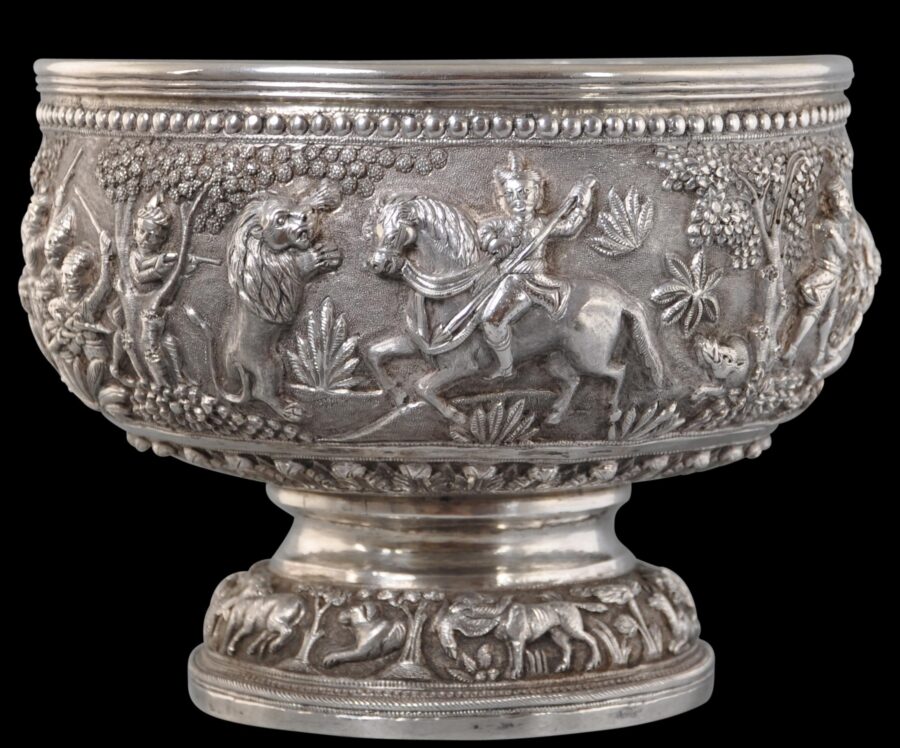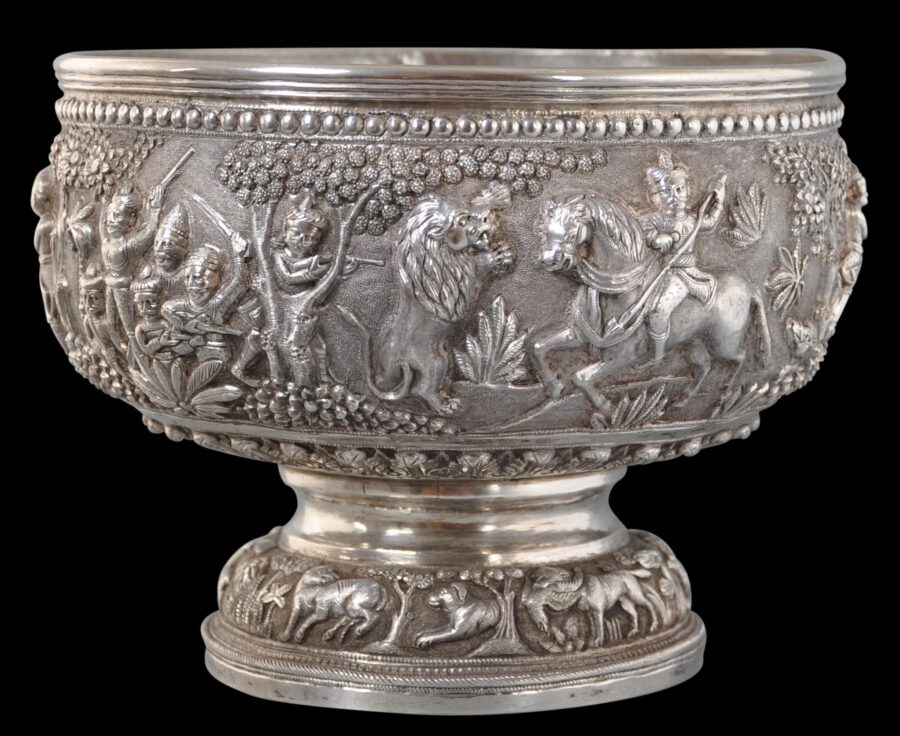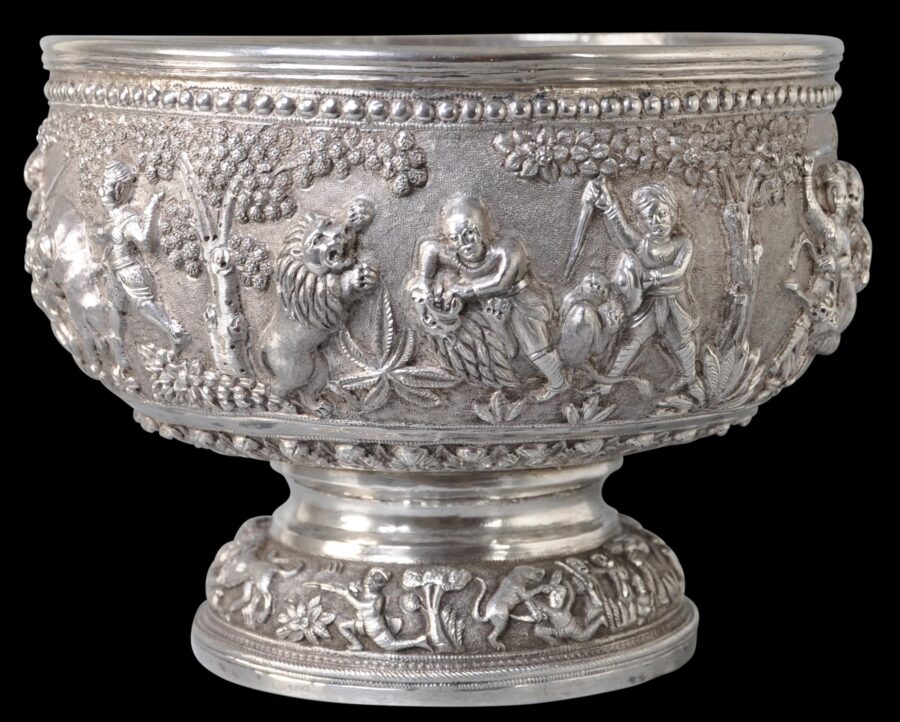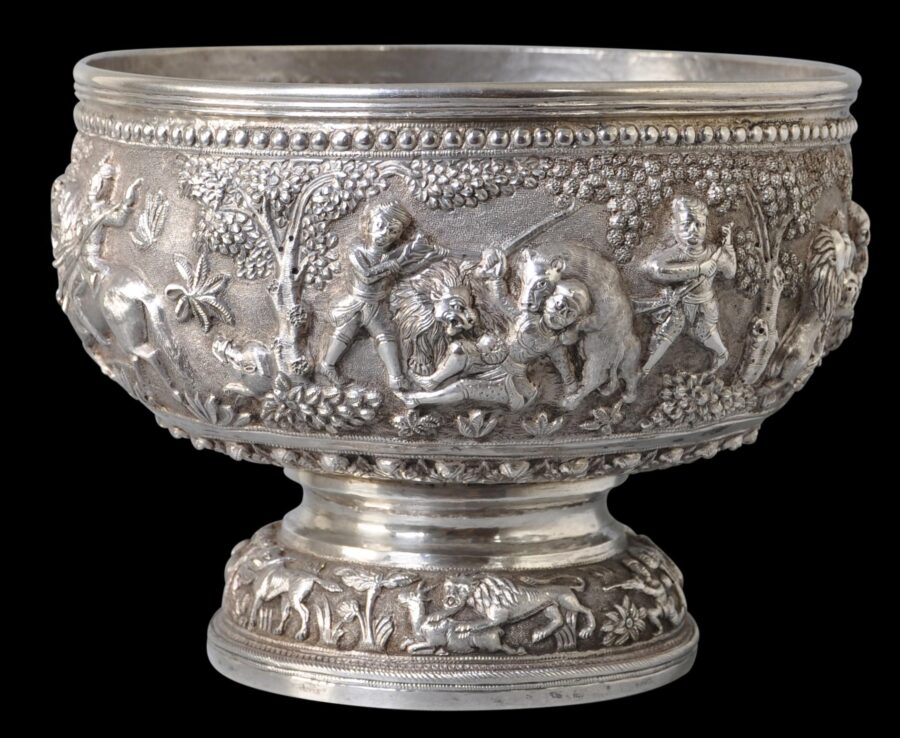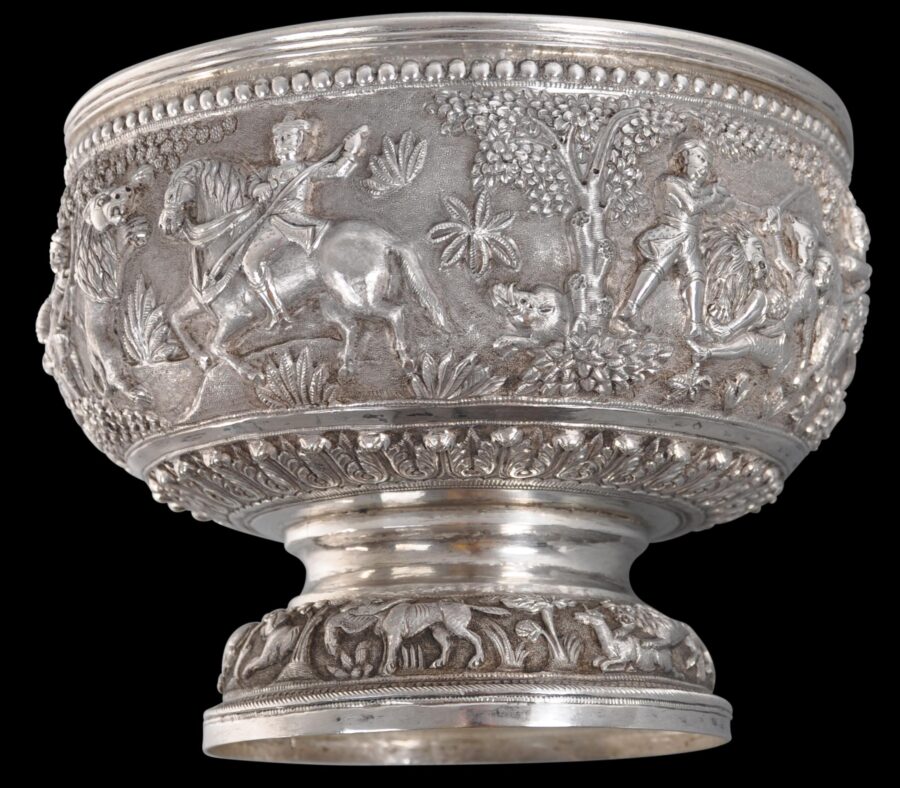This bowl is decorated in high relief with dynamic hunting scenes (a pattern known as the shikar or ‘hunting pattern’) and was produced in the late 19th century by Indian silversmiths working in Lucknow.
It sits on a domed foot, has a short, baluster-form neck, on which sits a wide bowl. Both the bowl and the foot are repoussed with hunting scenes, involving hunters (some on horseback) with sabres and rifles, and deer, lions, birds and a warthog. One scene shows a horse down, and being attacked by lions.
All the scenes incorporate canopies of trees over head and shrubbery underfoot.
Schematically, the designs on the bowl can be broken into smaller scenes but in reality presents as one long, continuous scene.
It is possible that bowls such as this example produced in Lucknow were based on the narrative bowls decorated in high relief that were produced in Burma, some of which were imported to the sub-continent via Madras.
Similar bowls are illustrated in Dehejia (2008, p. 176) and Wilkinson (1999, p. 135).
The bowl here is in excellent condition. The silver content is high.
References
Dehejia, V., Delight in Design: Indian Silver for the Raj, Mapin, 2008.
Wilkinson, W.R.T., Indian Silver 1858-1947, 1999.


